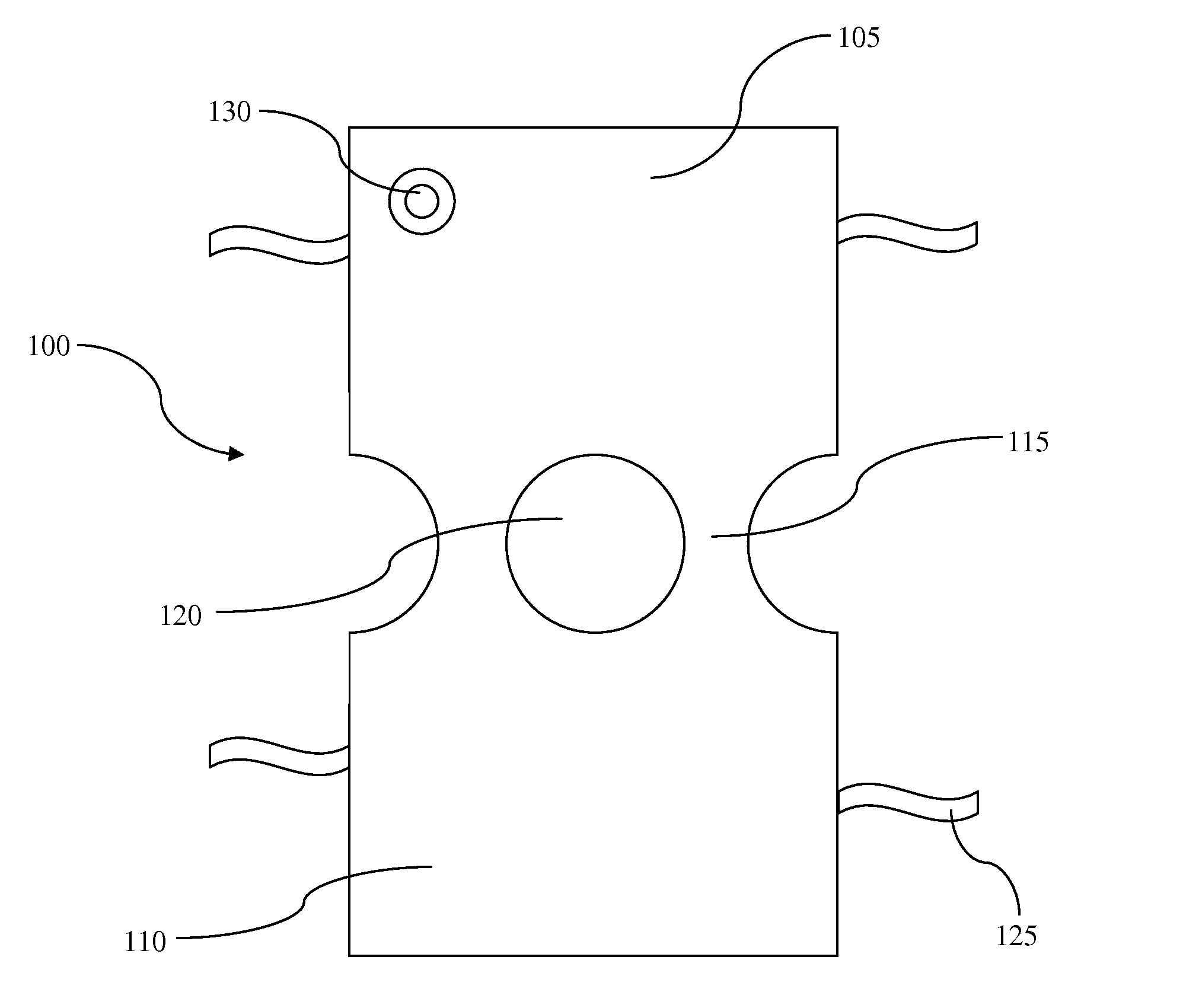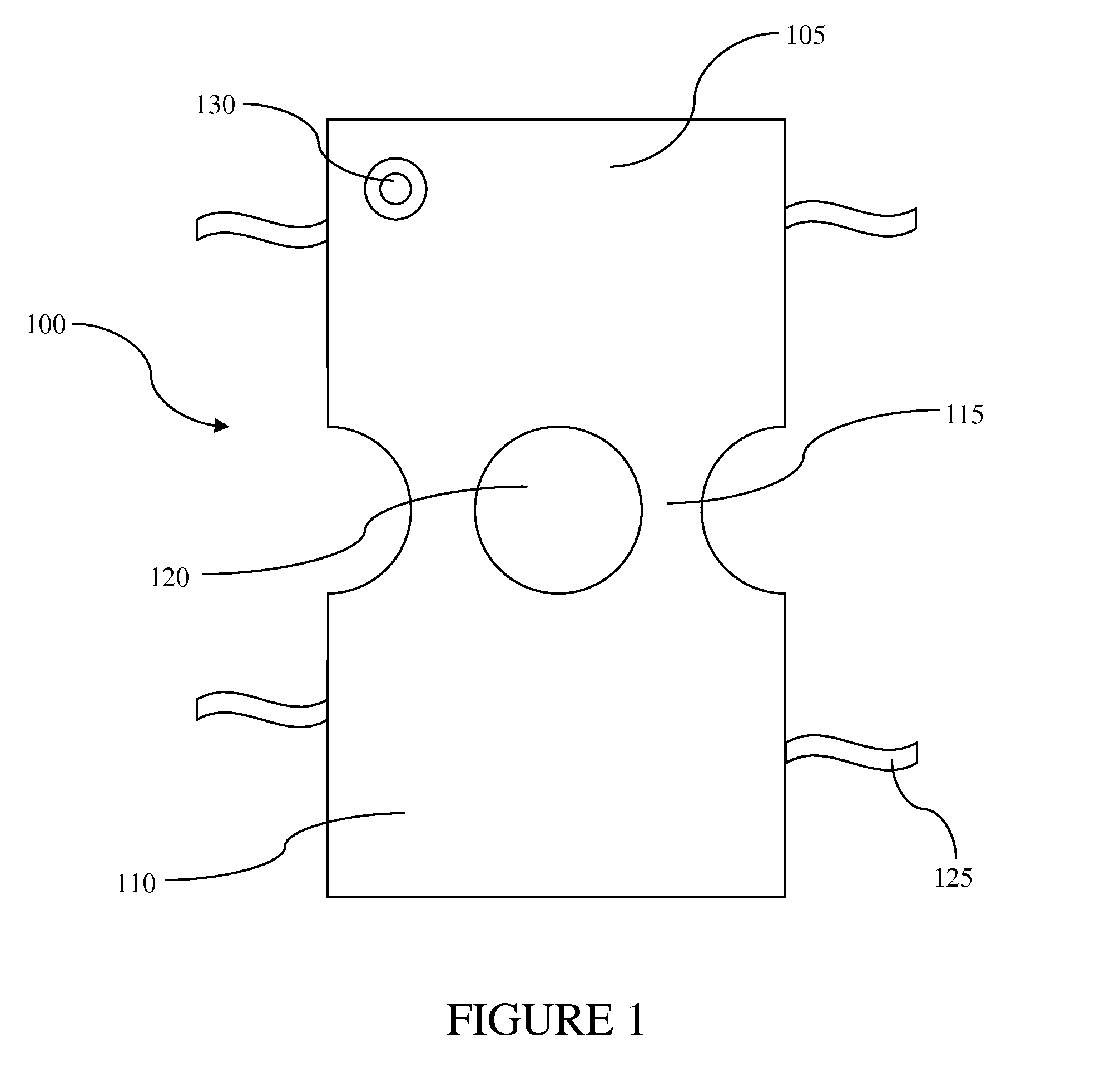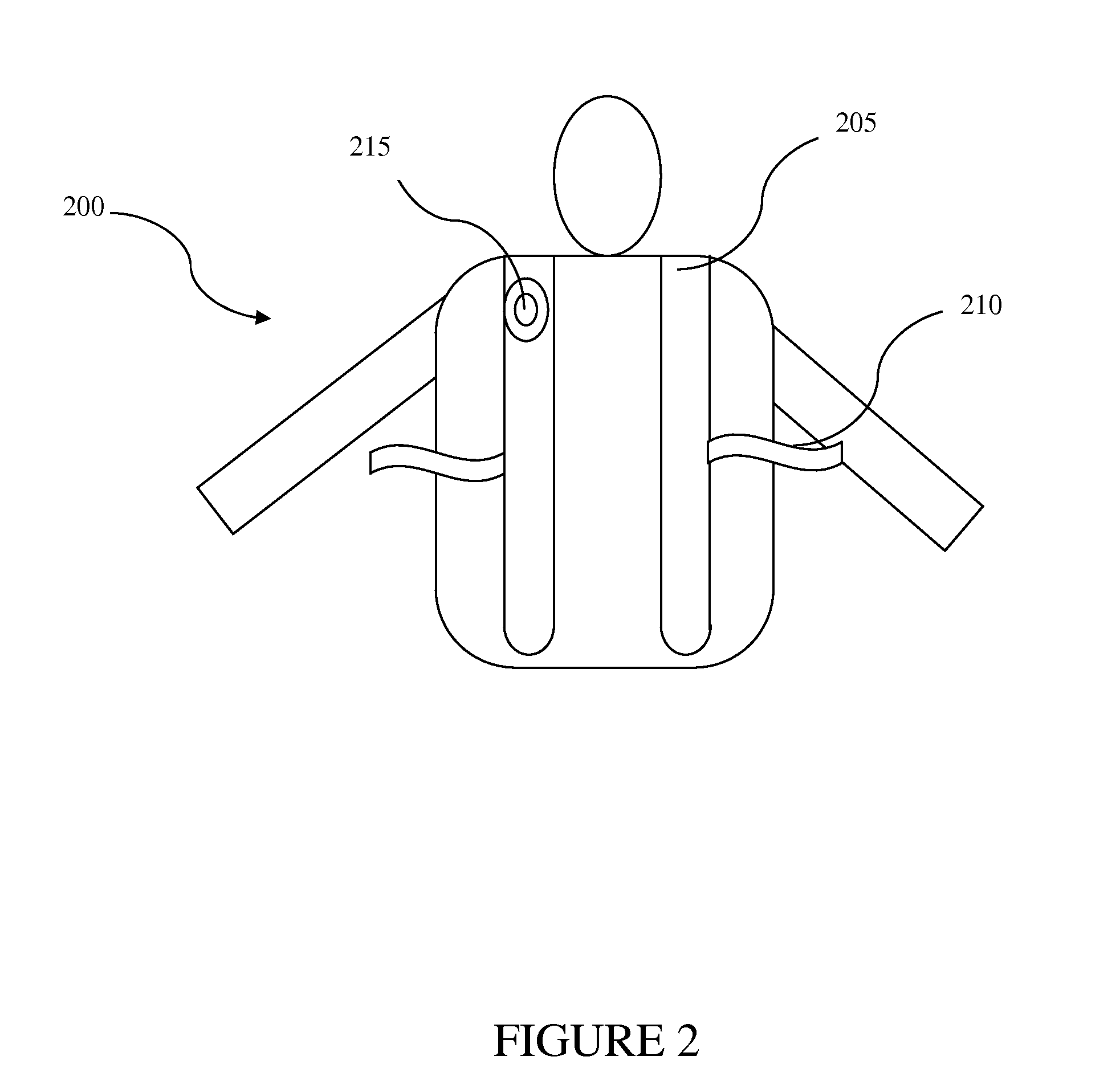High volume individual fluid transport device
a fluid transport device and high volume technology, applied in the direction of traveling carriers, special features of garments, overgarments, etc., can solve the problems of severe limitation of water movement from supply points to families, excessive weight of straps on heads, backs or shoulders, etc., and achieve the effect of cost effectiv
- Summary
- Abstract
- Description
- Claims
- Application Information
AI Technical Summary
Benefits of technology
Problems solved by technology
Method used
Image
Examples
examples
[0037]FIG. 1 depicts a top view of an embodiment of the invention. In the preferred embodiment, the container 100 is a wearable device. Preferably container 100 is a garment capable of being worn on a human's shoulders as a vest. In other embodiments, container 100 may be a jacket, a backpack, a head worn device, a belt, or another shape capable of being carried by a human. In the preferred embodiment container 100 is comprised of one sheet of material or two superimposed sheets of material coupled together at the edges. Preferably, the container is watertight. For example, the sheets of material can be plastic, nylon, wax impregnated cloth, PLA, polyester, rubber, or another waterproof and flexible material. The seams of container 100 may be welded, sown, crimped, fused, glued, or otherwise coupled in a watertight manner. Preferably, container 100 is airtight.
[0038]Preferably, container 100 is comprised of two main bladders 105 and 110 coupled together at shoulder straps 115. Bladd...
PUM
 Login to View More
Login to View More Abstract
Description
Claims
Application Information
 Login to View More
Login to View More - R&D
- Intellectual Property
- Life Sciences
- Materials
- Tech Scout
- Unparalleled Data Quality
- Higher Quality Content
- 60% Fewer Hallucinations
Browse by: Latest US Patents, China's latest patents, Technical Efficacy Thesaurus, Application Domain, Technology Topic, Popular Technical Reports.
© 2025 PatSnap. All rights reserved.Legal|Privacy policy|Modern Slavery Act Transparency Statement|Sitemap|About US| Contact US: help@patsnap.com



